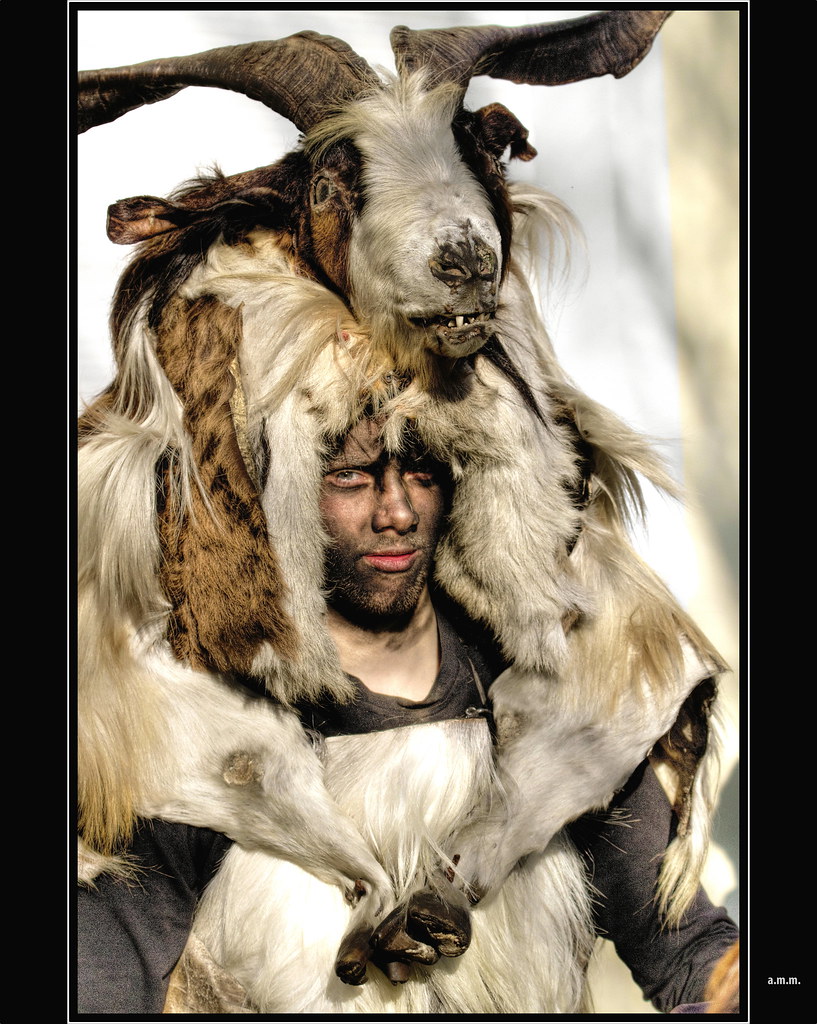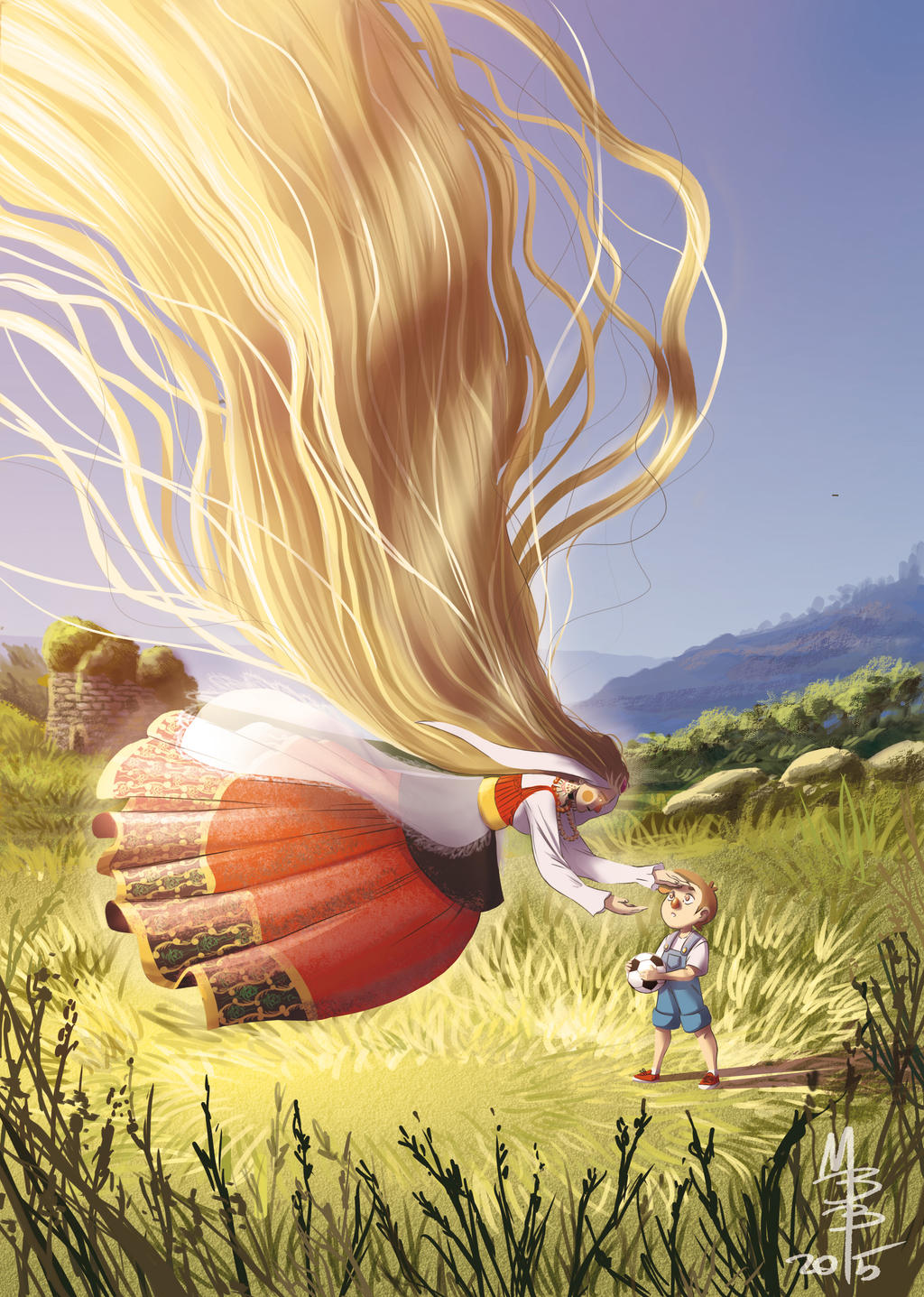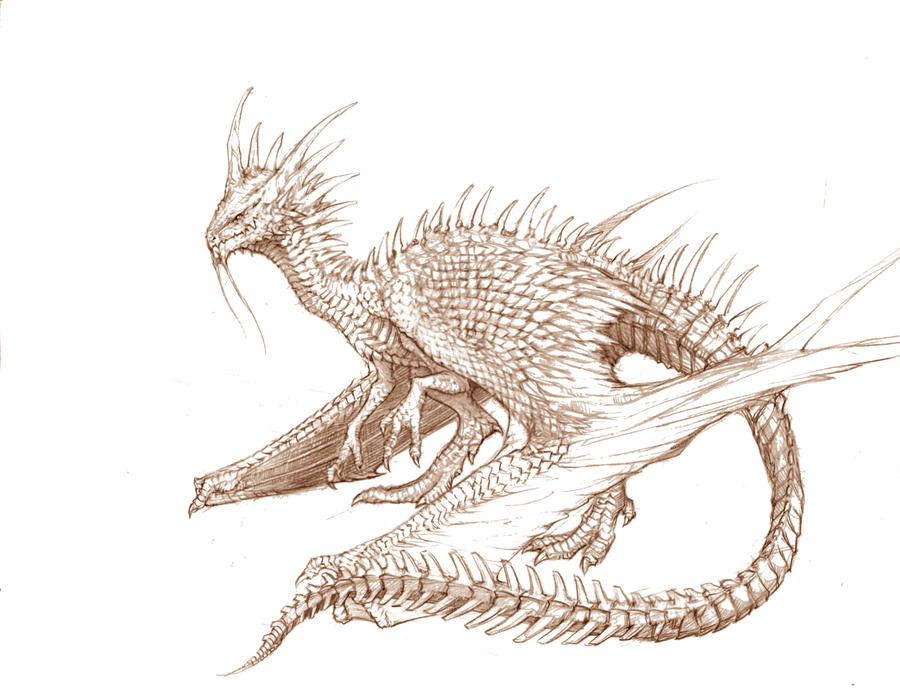Fascinating Mithological Creatures of Sardinia
A small collection of mythological monsters and creatures from Sardinia, whose origins are lost in the mists of times.
■ Janas
 The Janas, in Sardinian Mythology, are fairies, that sometimes can transform themselves in witches, so exist benevolent and evil Janas. The Janas look like beautiful winged small women who dress in red, and wear a hat embroidered with silver thread. They sometimes give off a blinding light. According to the tradition to each newborn baby was assigned a Jana, which would watch over and protect for a lifetime each person if the Jana was benevolent, in other case the Jana would cause misfortunes.
The Janas, in Sardinian Mythology, are fairies, that sometimes can transform themselves in witches, so exist benevolent and evil Janas. The Janas look like beautiful winged small women who dress in red, and wear a hat embroidered with silver thread. They sometimes give off a blinding light. According to the tradition to each newborn baby was assigned a Jana, which would watch over and protect for a lifetime each person if the Jana was benevolent, in other case the Jana would cause misfortunes.
According to the legends Janas live inside the Domus de Janas (in english is translated as "House of Fairies or Witches"). The Domus de Janas really exist, and they are thousands of pre-historic chamber tombs carved into the rock, found everywhere in Sardinia.
■ Panas
 They were the spirits of women who died in childbirth. The Panas could be seen along the rivers and the streams between the 1 and 3 o'clock a.m., while washing bloody clothes used during the childbirth, singing a sad lullaby.
They were the spirits of women who died in childbirth. The Panas could be seen along the rivers and the streams between the 1 and 3 o'clock a.m., while washing bloody clothes used during the childbirth, singing a sad lullaby.■ Maskinganna
 |
| (c) Alberto Maria Melis |
His favorite pastime was disturbing people while they slept.
■ Caddos Birdes
In Sardinian Folklore, the Caddos Birdes (En: Green Horses) were mythological creatures, constituted by little horses with green hair coat, very difficult to be sighted.
■ Cogas

The Cogas are vampiric witches. They according to the legend kill only the male babies, feeding on their blood. They looks like old ugly hags, and they are stump tailed (they are recognizable from this feature mainly), but sometimes they have the ability to transform themselves in other beings.
■ Iskultone
Called also Skrutsoni is the Sardinian version of the Basilisk. It's a giantic reptile, snake or dragon with 7 heads that live hibernating inside a mountain. It has a crystal cross on the forehead/s, brave people who will be able to take up the cross will have luck for life. Catch it is very dangerous, infact it can kill a man with a glance, or with its breath.
Recently it has been theorized that the legend on the Sardinian Basilisk would be began when in the past people found the fossils of dinosaurs that inhabited the island, such as the Cotylorhynchus (the basilisk descripted in the legends in the place where it was discovered looks at the description of this dinosaur)
■ Maria Farranka
She is female spirit who lives inside the wells, she has got claws to capture people, her victims are transformed in pigs and they are forced to live in underground tunnels.
■ Cogas

The Cogas are vampiric witches. They according to the legend kill only the male babies, feeding on their blood. They looks like old ugly hags, and they are stump tailed (they are recognizable from this feature mainly), but sometimes they have the ability to transform themselves in other beings.
■ Iskultone
Called also Skrutsoni is the Sardinian version of the Basilisk. It's a giantic reptile, snake or dragon with 7 heads that live hibernating inside a mountain. It has a crystal cross on the forehead/s, brave people who will be able to take up the cross will have luck for life. Catch it is very dangerous, infact it can kill a man with a glance, or with its breath.
Recently it has been theorized that the legend on the Sardinian Basilisk would be began when in the past people found the fossils of dinosaurs that inhabited the island, such as the Cotylorhynchus (the basilisk descripted in the legends in the place where it was discovered looks at the description of this dinosaur)
■ Maria Farranka
She is female spirit who lives inside the wells, she has got claws to capture people, her victims are transformed in pigs and they are forced to live in underground tunnels.
■ Sa Mama e su Entu
Sa Mama e su Entu in sardinian language means the Mother of the Wind. She is represented as a strict beautiful woman who fluctuates in the wind. When she gets angry , in the form of a stormy wind, scratches the face of people who have committed sins and uproots the trees during her passage.
■ Su Traigolzu
 He's a sort of Minotaur or a dragon (according to other variants of the legend) who lives in the deep sea. It comes out the sea only in august between the 14th and 15th day of the month, when he can free himself from the chains that held him. During the brief period of freedom he commits lot of damages, and taking a bath in the sea can be very dangerous. He armed with chains captures souls and living people to bring them in the depths of the sea.
He's a sort of Minotaur or a dragon (according to other variants of the legend) who lives in the deep sea. It comes out the sea only in august between the 14th and 15th day of the month, when he can free himself from the chains that held him. During the brief period of freedom he commits lot of damages, and taking a bath in the sea can be very dangerous. He armed with chains captures souls and living people to bring them in the depths of the sea.
■ Su Traigolzu
 He's a sort of Minotaur or a dragon (according to other variants of the legend) who lives in the deep sea. It comes out the sea only in august between the 14th and 15th day of the month, when he can free himself from the chains that held him. During the brief period of freedom he commits lot of damages, and taking a bath in the sea can be very dangerous. He armed with chains captures souls and living people to bring them in the depths of the sea.
He's a sort of Minotaur or a dragon (according to other variants of the legend) who lives in the deep sea. It comes out the sea only in august between the 14th and 15th day of the month, when he can free himself from the chains that held him. During the brief period of freedom he commits lot of damages, and taking a bath in the sea can be very dangerous. He armed with chains captures souls and living people to bring them in the depths of the sea. ■ Carru e’ Deus (The God Chariot)

The Carru e’ Deus, also known as Carru e' Nannai, is a flying chariot that across the sky during the storms, which carries heavy boulders, that when banging one another cause hard noises and sparks. This legend was told to children during the thunderstorms, in the reality the bang noises are the thunders and the sparks the lightnings.
■ Mazzamureddus

They are chubby elves that inhabit the houses, in particular the rustic country houses, they wear a red hat that covers a curly head. They are attracted by all shiny little objects. They hide the objects that catch in secret deposits. According to the legend only one boy is succeeded to get the confidence of the mazzamureddos, and become their friend.
■ Drullios
They are monstrous beings who inhabit the depths of the Gorropu Gorge, in the Supramonte. They came out from the canyon during the stormy nights killing the cattles, plundering the men and destroying the pinnettos (traditional shepherd huts).
■ Mama e su Sole

In sardinian folklore sa Mama 'e su Sole (the Mother of the Sun) was a fantastic creature constituted by a beautiful woman who appeared in summer after the midday, hitting the disobedient children that left the house to go play in the street, during the hottest hours of the day. Sa Mama e su Sole touched the forehead of children leaving a mark and causing a fever, called halentura , which lasted for several days. It was a way to explain to the children the dangers of of heat stroke.
■ Arreyulta
Arreyulta is a very tall woman with giantic proportions who appears between july 31 and august 1. She drags heavy chains and lives inside a grotto, located to the foot of Mount Pelao, outside the village of Bessude. Seeing her means a sign of impending death.
■ Origantes
The Origantes are an ancient People who settled in Sardinia since the the dawn of time and that now live underground, where they have built thousands of tunnels and towns.
■ Pascifera
It's a fantastic being dedicated to the protection of the wild animals. In the interior of Sardinia (Barbagia) is called the shepherd of the venison. He warns the mouflons and other wild animals in case of danger or appears to the hunters, hindering them during the hunt.















